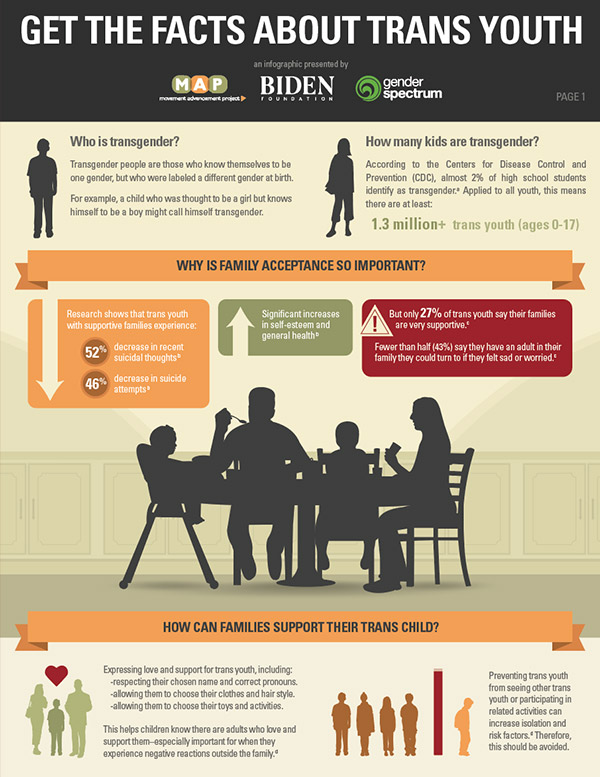The Bottom Line
As part of the “Advancing Acceptance” public education campaign, MAP, the Biden Foundation and Gender Spectrum released new resources including this new infographic, a clearinghouse of helpful links, tips for advancing the conversation, and policy recommendations geared toward promoting acceptance within families and communities of transgender and gender diverse youth. Learn more at www.advancingacceptance.org
Recommended citation:
Movement Advancement Project, The Biden Foundation "As You Are" Campaign, and Gender Spectrum. Infographic: Get the Facts About Trans Youth. February 2019.
https://www.lgbtmap.org/infographic-facts-trans-youth (Date of Access)


